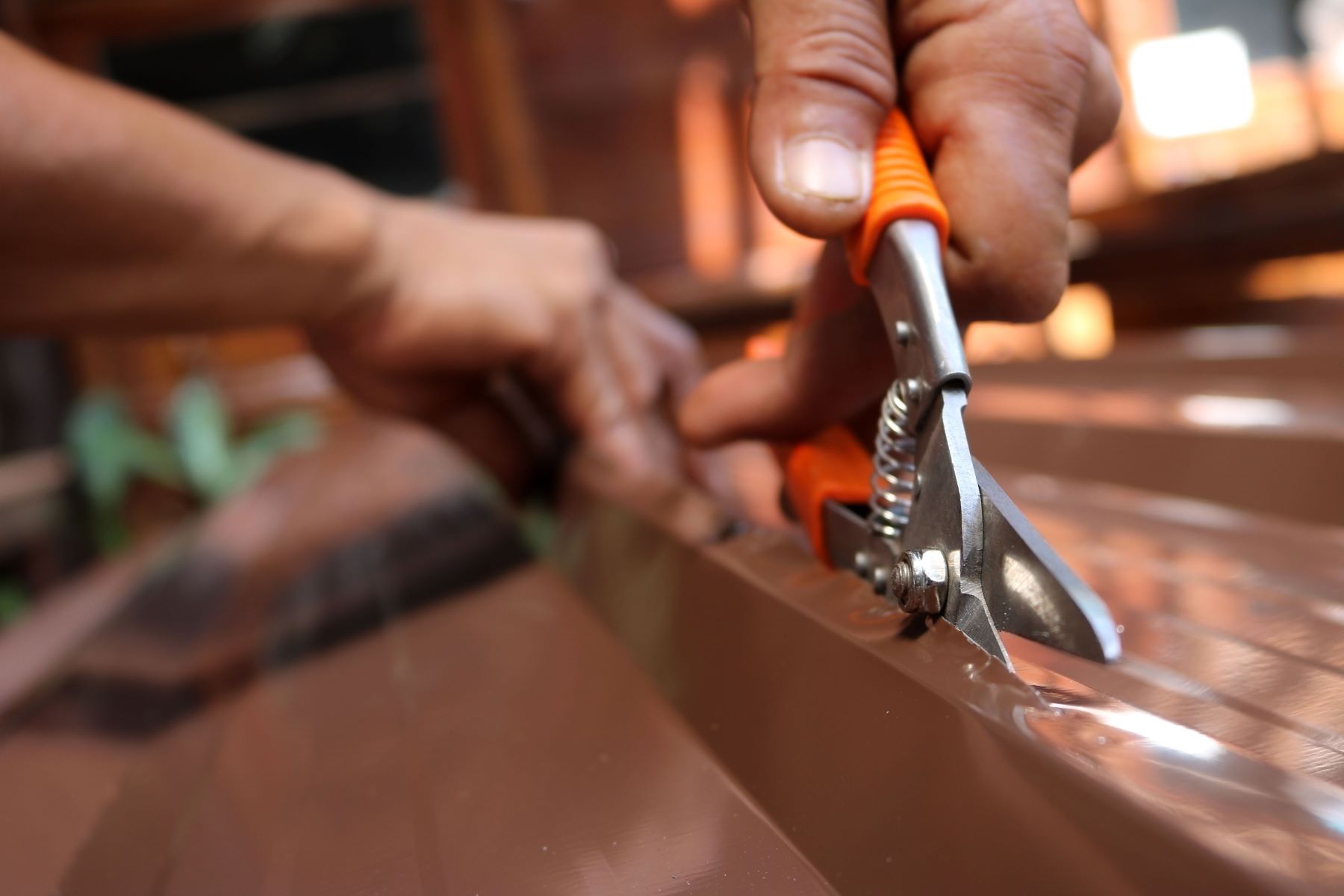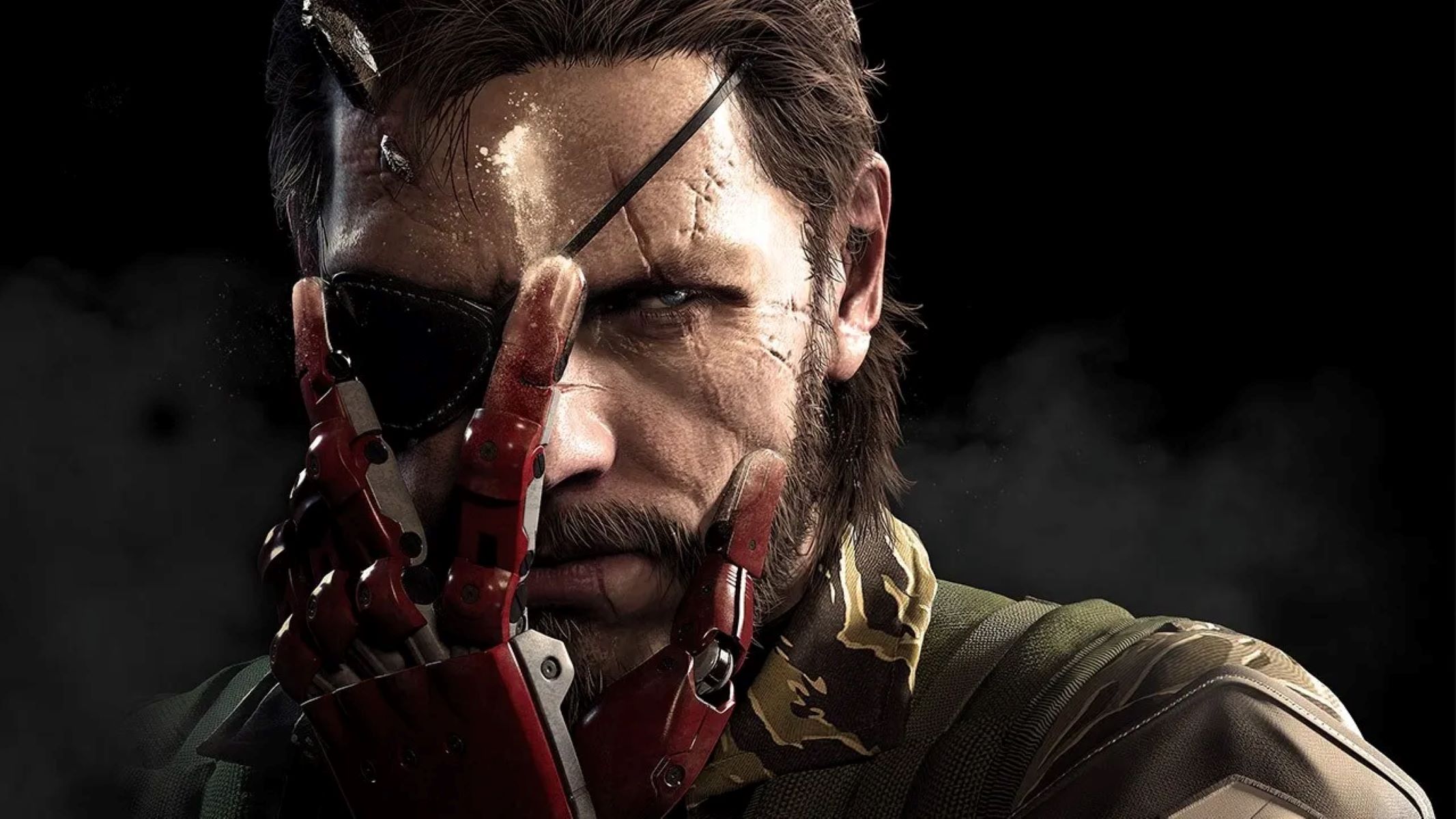Home>Home and Garden>How To Cut Metal Roofing


Home and Garden
How To Cut Metal Roofing
Published: February 28, 2024
Learn the best techniques for cutting metal roofing in your home and garden projects. Get expert tips and advice for a successful DIY project.
(Many of the links in this article redirect to a specific reviewed product. Your purchase of these products through affiliate links helps to generate commission for Regretless.com, at no extra cost. Learn more)
Table of Contents
Introduction
Metal roofing is a popular choice for homeowners and builders due to its durability, longevity, and low maintenance requirements. Whether you're installing a new roof or making repairs, knowing how to cut metal roofing is a valuable skill that can save you time and money. By mastering the techniques for cutting metal roofing, you can ensure precise and clean cuts, leading to a professional-looking finished product.
Understanding the fundamentals of cutting metal roofing is essential for anyone undertaking a roofing project. From selecting the right tools to employing proper safety measures, this guide will provide you with the knowledge and confidence to tackle metal roofing projects with ease.
In this comprehensive guide, we will delve into the safety precautions necessary when working with metal roofing, the essential tools and materials you'll need, as well as the precise measuring and marking techniques required for accurate cuts. Additionally, we'll explore various cutting techniques and offer valuable tips to ensure that your metal roofing project is a resounding success.
By the end of this guide, you'll be equipped with the expertise to handle metal roofing with precision and finesse, empowering you to take on roofing projects with confidence and achieve professional results. Let's dive into the world of metal roofing and discover the art of cutting it with precision and skill.
Read more: How To Cut Cabbage
Safety Precautions
When working with metal roofing, prioritizing safety is paramount to prevent accidents and ensure a smooth and secure working environment. Before embarking on any metal roofing project, it is crucial to adhere to a set of safety precautions to safeguard yourself and others involved in the process.
Personal Protective Equipment (PPE)
Wearing appropriate personal protective equipment is the first line of defense when working with metal roofing. Essential PPE includes:
- Safety Glasses: Protect your eyes from metal shards, debris, and potential sparks generated during cutting.
- Gloves: Choose gloves that provide a firm grip and protection against sharp edges and metal burrs.
- Ear Protection: Shield your ears from the noise generated by power tools, such as metal shears or grinders.
- Respirator or Dust Mask: Guard against inhaling metal dust and particles, especially when cutting or grinding metal roofing sheets.
Secure Footing and Fall Protection
Maintaining secure footing on the roof is crucial to prevent slips and falls. Use appropriate footwear with non-slip soles and consider the following measures:
- Fall Restraint System: When working at heights, use a fall restraint system, such as a harness and lanyard, to prevent accidental falls.
Tool Safety
Understanding and adhering to safety guidelines for the tools used in cutting metal roofing is essential. Ensure that:
- Tools are in Good Condition: Inspect all cutting tools to ensure they are in proper working condition, with sharp blades and secure handles.
- Proper Handling: Follow the manufacturer's instructions for safe handling and operation of cutting tools, such as shears, nibblers, or power saws.
- Secure Work Area: Clear the work area of any potential hazards, and ensure that bystanders are at a safe distance during cutting operations.
Read more: How To Cut A Peach
Weather Considerations
Be mindful of weather conditions when working with metal roofing. Avoid working during inclement weather, such as rain or strong winds, as these conditions can increase the risk of accidents and compromise the quality of cuts.
By adhering to these safety precautions, you can create a secure and controlled environment for cutting metal roofing, mitigating potential risks and ensuring a successful and accident-free project. Prioritizing safety not only protects you and your team but also contributes to the overall quality and efficiency of the roofing project.
Tools and Materials Needed
When embarking on a metal roofing project, having the right tools and materials at your disposal is essential for achieving precise and professional results. From cutting tools to safety equipment, the following list outlines the necessary items required to effectively cut and work with metal roofing.
Cutting Tools
-
Metal Shears: These specialized cutting tools are designed to make straight and curved cuts in metal roofing panels. They come in both manual and electric variations, offering versatility and precision for different cutting requirements.
-
Nibbler: A nibbler is ideal for cutting intricate shapes and patterns in metal roofing. This tool operates by punching a series of rapid, small incisions, resulting in clean and precise cuts without distorting the metal.
-
Circular Saw with Metal-Cutting Blade: A high-quality circular saw equipped with a metal-cutting blade is indispensable for making straight and efficient cuts in metal roofing panels. The blade's teeth are specifically designed to handle the rigidity of metal, ensuring smooth and accurate cuts.
-
Angle Grinder with Cutting Wheel: An angle grinder fitted with a cutting wheel is useful for trimming and shaping metal roofing panels. It provides the flexibility to make adjustments and fine-tune cuts as needed.
Measuring and Marking Tools
-
Tape Measure: A reliable tape measure is essential for accurately measuring the dimensions of metal roofing panels before making cuts. Opt for a durable and easy-to-read tape measure for precise measurements.
-
Chalk Line: A chalk line is indispensable for marking straight cutting lines on metal roofing panels. It ensures uniformity and accuracy in the cutting process, resulting in clean and professional-looking cuts.
-
Marker or Scriber: Use a marker or scriber to make clear and visible markings on the metal surface, indicating the precise points for cutting or shaping.
Read more: How To Cut Dragon Fruit
Safety Equipment
-
Safety Glasses: Protect your eyes from metal shards, debris, and potential sparks generated during cutting operations.
-
Gloves: Choose gloves that provide a firm grip and protection against sharp edges and metal burrs, ensuring safety and comfort during handling.
-
Ear Protection: Shield your ears from the noise generated by power tools, such as metal shears or grinders, to prevent hearing damage.
-
Respirator or Dust Mask: Safeguard against inhaling metal dust and particles, especially when cutting or grinding metal roofing sheets.
Additional Materials
-
Metal Roofing Panels: The primary material for the roofing project, available in various profiles and finishes to suit different architectural styles and preferences.
-
Screws and Fasteners: Select appropriate screws and fasteners designed for metal roofing installation, ensuring secure and durable attachment of the roofing panels.
-
Roofing Underlayment: Install a high-quality roofing underlayment to provide an additional layer of protection against moisture and enhance the overall weatherproofing of the roof.
By assembling the necessary tools and materials outlined above, you can approach your metal roofing project with confidence and efficiency, ensuring that you have everything required to achieve precise and professional results.
Measuring and Marking
Accurate measurements and precise markings are fundamental to achieving clean and professional cuts when working with metal roofing. The process of measuring and marking sets the foundation for the entire cutting operation, ensuring that the roofing panels are tailored to fit the specific dimensions of the installation area. By following meticulous measuring and marking techniques, you can minimize errors and wastage while achieving a seamless and visually appealing end result.
Tape Measure:
Before initiating any cutting activities, begin by using a reliable tape measure to determine the exact dimensions of the metal roofing panels. Measure the length and width of the panels, taking into account any overlaps or allowances required for the specific roofing design. It is crucial to double-check the measurements to avoid inaccuracies that could lead to ill-fitting panels or unnecessary material wastage.
Read more: How To Cut The Neck Of A Shirt
Chalk Line:
Once the measurements are confirmed, a chalk line becomes an indispensable tool for marking straight cutting lines on the metal roofing panels. To ensure precision, stretch the chalk line taut across the surface of the panel and snap it to create a clear and visible guideline for the cutting process. This step is essential for maintaining uniformity and accuracy in the cuts, resulting in a professional and polished finish.
Marker or Scriber:
In addition to using a chalk line for straight cuts, a marker or scriber is employed to make clear and visible markings on the metal surface for more intricate or detailed cutting requirements. Whether delineating curved edges or intricate patterns, a marker or scriber allows for precise and controlled markings, ensuring that the cutting process aligns with the intended design and dimensions.
By meticulously adhering to these measuring and marking techniques, you establish a solid framework for the subsequent cutting operations. These preparatory steps not only contribute to the accuracy and quality of the cuts but also streamline the overall installation process, resulting in a seamless and visually striking metal roofing system.
In summary, the measuring and marking phase is a critical precursor to the cutting process, laying the groundwork for precise and tailored cuts that align with the specific requirements of the roofing project. By employing meticulous measuring and marking techniques, you can optimize material usage, minimize errors, and ultimately achieve a professional and visually appealing metal roofing installation.
Cutting Techniques
Mastering the art of cutting metal roofing requires a nuanced understanding of various cutting techniques to achieve precise and clean cuts. Whether you are making straight cuts, curved cuts, or intricate shapes, employing the right cutting technique is essential for ensuring the structural integrity and visual appeal of the metal roofing panels.
Straight Cuts
When making straight cuts in metal roofing panels, utilizing a circular saw with a metal-cutting blade is a popular and effective technique. Begin by securely clamping the panel to a stable work surface to prevent movement during cutting. Position the saw blade along the marked cutting line and initiate the cutting process with a steady and controlled motion. It is crucial to maintain a consistent cutting speed and apply gentle pressure to guide the saw along the designated path, resulting in a smooth and precise straight cut.
Read more: How To Cut After Bulking
Curved Cuts
For curved cuts or intricate shapes, metal shears and nibblers are invaluable tools that offer precision and maneuverability. Metal shears are ideal for creating gentle curves and rounded edges, providing the flexibility to navigate the metal roofing panels with ease. Nibblers, on the other hand, excel in producing intricate and irregular shapes by punching rapid, small incisions along the cutting line. This technique ensures clean and precise curved cuts without distorting the metal, allowing for customized and visually appealing designs.
Angle Grinder for Trimming
An angle grinder equipped with a cutting wheel is a versatile tool for trimming and refining the edges of metal roofing panels. This technique is particularly useful for adjusting the dimensions of the panels or fine-tuning the cuts to achieve a seamless fit during installation. With the ability to make precise adjustments and intricate cuts, the angle grinder enhances the overall precision and aesthetic quality of the metal roofing system.
Precision and Control
Regardless of the cutting technique employed, maintaining precision and control throughout the cutting process is essential. Smooth and deliberate movements, coupled with a keen focus on the designated cutting lines, are crucial for achieving clean and accurate cuts. Additionally, periodic inspections of the cutting tools and the metal roofing panels ensure that the cutting process remains on track, resulting in professional and visually appealing outcomes.
By mastering these cutting techniques and understanding the nuances of each approach, you can elevate the quality and precision of your metal roofing projects. Whether it's straight cuts, curved cuts, or intricate shaping, employing the right cutting technique is instrumental in achieving a flawless and professional finish, enhancing the overall aesthetic and structural integrity of the metal roofing installation.
Tips for Cutting Metal Roofing
When it comes to cutting metal roofing, implementing the following tips can significantly enhance the efficiency, precision, and overall quality of the cutting process.
-
Select the Right Blade or Cutting Tool: Choosing the appropriate blade or cutting tool for the specific metal roofing material is crucial. Different types of metal, such as steel or aluminum, may require specialized blades designed to handle their unique properties. Ensuring that the cutting tool is compatible with the metal being worked on is essential for achieving clean and accurate cuts.
-
Minimize Metal Shavings: To minimize the generation of metal shavings and burrs during cutting, applying a lubricant or cutting fluid can be beneficial. This not only facilitates smoother cutting but also helps in preserving the sharpness and longevity of the cutting tool.
-
Support the Material: When cutting metal roofing panels, providing adequate support for the material is essential to prevent distortion and ensure precise cuts. Using sawhorses or a stable workbench to support the panels during cutting minimizes vibrations and enhances cutting accuracy.
-
Mind the Cutting Speed: Maintaining an appropriate cutting speed is crucial for achieving clean and precise cuts. Rushing the cutting process can lead to jagged edges and uneven cuts, while excessively slow cutting may cause unnecessary friction and heat buildup. Finding the optimal cutting speed for the specific metal and cutting tool is key to achieving professional results.
-
Consider Safety Precautions: Prioritizing safety measures, such as wearing personal protective equipment and maintaining a secure work environment, cannot be overstated. Adhering to safety guidelines not only safeguards against potential injuries but also contributes to a focused and controlled cutting process.
-
Inspect and Maintain Tools: Regularly inspecting and maintaining cutting tools is essential for optimal performance. Sharp blades, secure handles, and proper tool alignment contribute to the precision and efficiency of the cutting process, ensuring consistent and high-quality results.
-
Plan for Waste Management: Effective waste management during the cutting process is essential for maintaining a clean and organized work area. Having designated containers for collecting metal shavings and waste material streamlines the cleanup process and contributes to a safe and efficient work environment.
By incorporating these tips into the metal roofing cutting process, individuals can elevate the quality and precision of their work, resulting in professional and visually appealing outcomes. Each tip serves as a valuable guideline for optimizing the cutting process, ultimately contributing to the successful completion of metal roofing projects.
Read more: How To Cut A Shag Haircut
Conclusion
Mastering the art of cutting metal roofing is a valuable skill that empowers individuals to undertake roofing projects with confidence and precision. From understanding the essential safety precautions to selecting the right tools and materials, the process of cutting metal roofing demands meticulous attention to detail and a commitment to excellence. By adhering to safety guidelines, employing precise measuring and marking techniques, and mastering various cutting methods, individuals can achieve professional and visually striking results in their metal roofing endeavors.
The importance of safety cannot be overstated when working with metal roofing. Prioritizing personal protective equipment, securing the work area, and considering weather conditions are fundamental steps that contribute to a secure and controlled environment for cutting metal roofing. By embracing these safety precautions, individuals not only safeguard themselves and their team but also enhance the overall quality and efficiency of the roofing project.
Equally crucial is the selection of the right tools and materials. From metal shears and nibblers to circular saws and angle grinders, having the appropriate cutting tools at hand is essential for achieving precise and professional cuts. Additionally, employing reliable measuring and marking tools, such as tape measures and chalk lines, sets the stage for accurate and tailored cuts, minimizing errors and material wastage.
The cutting techniques discussed, including straight cuts, curved cuts, and the use of angle grinders, offer individuals a comprehensive understanding of the nuanced approaches required for different cutting requirements. By mastering these techniques and maintaining precision and control throughout the cutting process, individuals can elevate the quality and aesthetic appeal of their metal roofing installations.
Furthermore, the incorporation of valuable tips, such as selecting the right blade, minimizing metal shavings, and maintaining cutting tool integrity, serves as a guide for optimizing the cutting process. These tips not only enhance the efficiency and precision of the cutting process but also contribute to a safe and organized work environment.
In conclusion, the journey of cutting metal roofing encompasses a blend of technical expertise, meticulous attention to detail, and a steadfast commitment to safety. By embracing these principles and techniques, individuals can embark on metal roofing projects with confidence, knowing that they possess the knowledge and skills to achieve professional and visually stunning results. Whether it's a new installation or a repair endeavor, the art of cutting metal roofing is a testament to precision, craftsmanship, and the pursuit of excellence in the realm of home and garden improvement.










